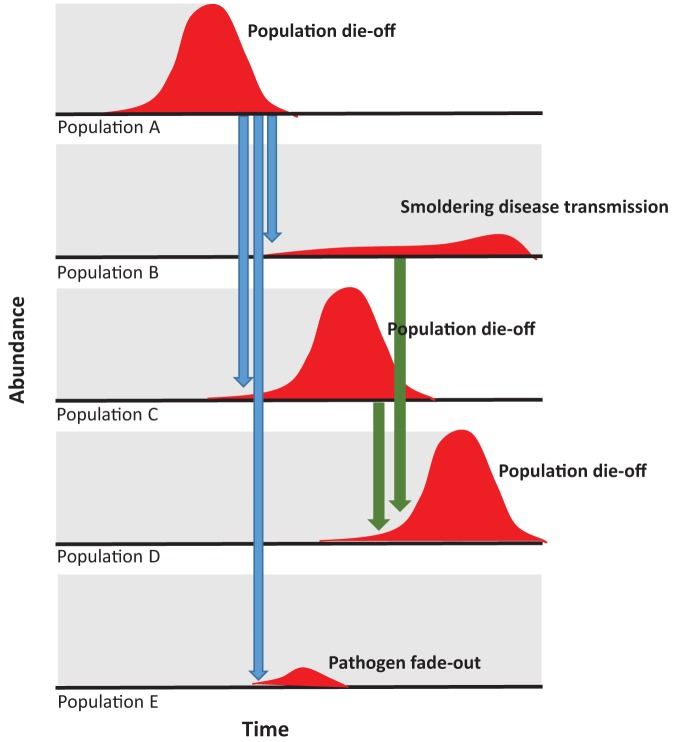Figure 5.
A conceptual diagram of the metapopulation dynamics of plague and prairie dogs. The perceived abundance of the prairie dog population is shown in gray. The numbers of prairie dogs infected with Yersinia pestis are shown in dark gray. A plague outbreak in population A may cause a die-off in the hosts, but the pathogen is transmitted to nearby populations (light gray arrows). In the new populations, Y. pestis may (a) smolder and transmit slowly (e.g., population B), (b) cause a new outbreak (e.g., population C), or (c) fade out (e.g., population E). Subsequent spread (dark gray arrows) may occur from populations actively experiencing die-offs (e.g., population C to population D) or from populations experiencing smoldering plague transmission (e.g., population B to population C). Across a mosaic of prairie dog colonies on the landscape, plague may therefore be absent, smoldering, fading out, or causing die-offs. Researchers monitoring prairie dog colonies may not notice declines in population density (background gray) in the cases in which fade-out or smoldering transmission occurs; therefore, there is an observer bias in understanding Y. pestis’ presence and spread.

